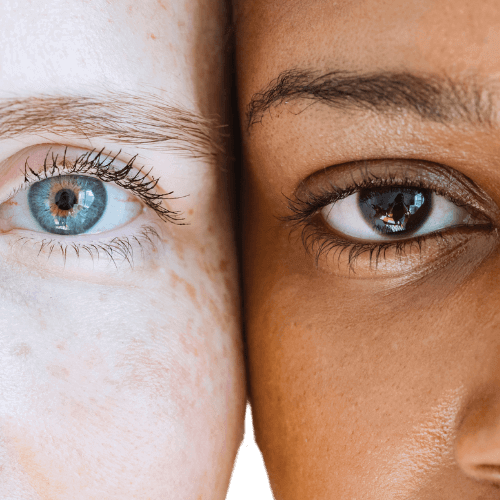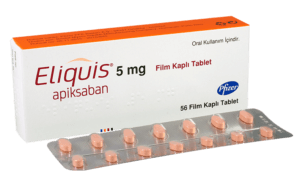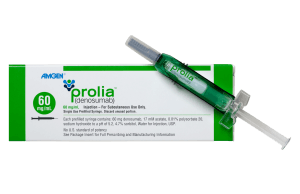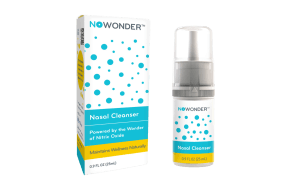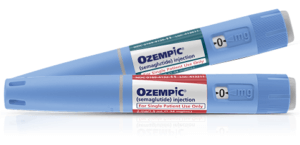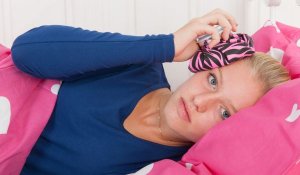
Why are pediatric migraines underdiagnosed?
Pediatric migraines can be challenging to identify because kids and teens often show different symptoms from adults. They may not experience early warning signs, like an aura, or they might not recognize them yet. Migraines in children are usually shorter and cause pain on both sides of the head or all over, unlike adults, who often feel pain on one side. Kids are also more likely to have stomach-related symptoms, such as nausea, vomiting, stomach pain, and diarrhea.
Complaints of pain may cause parents to seek immediate relief for their child, so trying to diagnose whether the symptoms that indicate a migraine are overlooked in favor of taking steps to minimize their pain. Parents should tell their children that it’s important to report if they have a severe headache because that is not normal. They need to seek help from their doctors, and their child needs to know that support is available.
How can teenagers monitor their migraine triggers?
Teenagers can manage migraines more effectively by understanding them better. They should learn what triggers their migraines and explore ways to reduce the chances of them happening. Preventing migraines is all about identifying the triggers that cause them. Once the triggers are identified, the goal is to minimize their occurrence as much as possible. Tools like keeping a diary, using a phone calendar, or trying apps like Migraine Buddy can help track patterns. The diary should include details about the day, such as specific activities, foods, or any unusual events, along with notes on when the migraines occur and their severity. Over time, patterns may emerge that reveal the underlying causes of the migraines. Once the triggers are identified, adjustments can be made to the child’s daily routine to help avoid them, and treatments can be implemented effectively.
The common lifestyle triggers, and how to avoid them, are:
|
Sleep |
It is essential to get enough quality sleep, around 8 or 9 hours for children and teenagers. Establishing a regular sleep-wake cycle with consistent bedtimes and waking times can be beneficial. If getting a good night’s sleep is an issue, supplements that are safe for both adults and teens, like The Sleep Pack, may help. |
|
Caffeine |
Drinking caffeine-loaded beverages regularly can create dependence, triggering severe headaches when you don’t get them. Avoiding caffeine in general is advisable, but limiting it to just an occasional soda or beverage is acceptable. For some people, caffeine can help at the start of a headache. |
|
Hydration |
Increase water intake if active or sweating. Try to drink enough to need the restroom at least every 2 to 3 hours. |
|
Posture |
Bad posture can trigger headaches by placing excessive strain on the neck, shoulders, and upper back muscles. Looking down at smartphones and tablets can cause headaches. Use a comfortable position and take frequent breaks. |
|
Food |
Missed meals can trigger headaches for some people. Some people have specific food triggers for headaches, including bananas, strawberries, chocolate, foods with MSG (such as processed meats), red wine, or pungent cheeses. Limit intake of sugary beverages and sweets. |
|
Heat & Sunlight |
Hot weather, bright lights, or sunlight can trigger headaches. Avoid long periods in direct sunlight, and wear sunglasses and a hat outdoors. |
|
Stress |
Stress is a widespread trigger. Identifying and managing stress is critical. There are many ways to manage stress, such as:
|
Main medications for migraine in children and teenagers
Although migraines are not curable, several medications can relieve the acute pain or shorten the duration of a migraine attack. The primary form of the medication is based on triptans, which work by stimulating serotonin receptors (5-HT receptors) in the brain. Natural serotonin acts on these receptors, causing blood vessels in the brain to constrict. Triptans mimic this action by directly stimulating serotonin receptors. These drugs are prescribed for adults with migraines. Maxalt is the only FDA-approved triptan for children aged 6-17, but doctors can prescribe other medicines off-label where it is deemed appropriate, and dosages are adjusted according to the child’s age and body mass.
|
Drug |
Effects |
|
Amerge/Naramig (naratriptan) is a triptan that works in the same way as Relpax and Maxalt, and others |
|
|
Relpax/Relert (eletriptan) Belongs to the group of triptans |
|
|
Imitrex / Imigran (sumatriptan) is a triptan that works in the same way as Relpax, Amerge, and others – the dosage is usually administered along with naproxen, up to 80/500mg, for older children. |
|
|
Maxalt (rizatriptan) is a triptan that works similarly to Imitrex/Imigran, Zomig, and other medications.. |
|
|
Zomig (zolmitriptan) is a triptan that works similarly to Imitrex, Maxalt, and other medications – the recommended dosage for children is typically 5 mg. |
Main nutrients for migraines in teens
Supplements, such as The Stress Pack, can help balance stress-related hormones in teens, featuring well-studied ingredients like magnesium and B vitamins. Recommended nutrients for migraines include:
|
Nutrient |
Key Role |
Effectiveness |
|
Magnesium |
It may reduce brain excitability linked to migraines. |
Shown to help reduce severity and frequency of migraines in children and adults. |
|
Riboflavin (B2) |
Supports energy production; linked to mitochondrial function. |
It may help children with severe migraines unresponsive to other treatments. |
|
Coenzyme Q10 |
Supports mitochondrial energy production; acts as an antioxidant. |
Shown to reduce headache frequency and severity in children and adults. |
|
5-HTP |
Boosts serotonin levels, potentially reducing the frequency and severity of migraines. |
Promising results in studies may help with other migraine symptoms like nausea and light sensitivity. |
Preventing migraines in teens with lifestyle adjustments
Managing migraines can often come down to making certain lifestyle adjustments and avoiding triggers. While some things, like changes in the weather, are beyond anyone’s control, focusing on what can be controlled, such as drinking enough water, can make a significant difference. The five main tips for preventing migraines are staying hydrated, eating a balanced diet, getting sufficient sleep, exercising regularly, and managing stress effectively. People who stick to these habits are likely to experience fewer migraines, while neglecting them can lead to more frequent headaches.
Hydration
Staying hydrated is one of the simplest ways to help prevent migraines, and they should drink even more if they have a migraine, are exercising, or spending time in hot weather. Bringing a refillable water bottle to school and finishing it by the end of the day can help students stay hydrated and avoid those after-school headaches. The best drinks include water, seltzer, electrolyte-rich fluids, milk, and moderate amounts of juice.
Diet
Some foods can trigger migraines, especially if someone is sensitive or intolerant to them. This is where a food diary can be handy in identifying trigger foods. Foods that are heavily processed or full of additives, for example, are often identified as contributing to migraines. Skipping meals is another common trigger. For teenagers, it’s essential to eat regularly and avoid prolonged periods without food. If someone wants to try a specific diet to manage migraines, it’s a good idea to talk to a registered dietitian who has experience with migraines.
Sleep
Sleep plays a big role in preventing migraines. Not getting enough sleep or sleeping too much can both trigger migraines. Sticking to a regular sleep schedule, even on weekends, can help prevent them. This can be challenging for teens, and it might mean making decisions about skipping sleepovers or balancing sports and activities. Setting limits on phone and electronics use before bed is also important. Life can be busy and overwhelming, but making sleep a priority is worthwhile to reduce the risk of migraines.
Physical activity
Regular exercise is a great way to help prevent migraines. It improves physical health, lowers stress, releases feel-good endorphins, and can even be a fun way to socialize. All of these benefits lead to a healthier lifestyle and fewer migraines. Experts recommend getting at least 30 minutes of intense activity three times a week. This could include playing sports, dancing, working out at the gym, or even running around with the family dog. The most effective exercise is simply the one a person enjoys and will stick with.
Stress management
Stress is the top trigger for migraines in people of all ages. Reducing stress can help lower the number of migraines someone gets. One way to do this is by practicing relaxation techniques. These activities help calm the mind, reduce stress, and improve focus. Examples include yoga, meditation, breathing exercises, or guided imagery. There are also apps like Calm, Headspace, and Insight Timer that provide helpful guidance and meditation for stress management.
Common questions about migraines in younger people
At what ages do migraines occur?
Migraine can affect people of all ages, but they usually start in the early teenage years. Some younger children may suffer migraine attacks, but they may be of shorter duration and not associated with symptoms as severe as are typically seen in later years.
Studies report that up to the mid to late teens, around one in ten boys get migraine headaches, and around half as many girls. By the early twenties, that ratio is reversed, and about one in five girls report recurrent migraines, compared to about one in six boys. Throughout adult life, the ratio of females to males keeps increasing until, in later years, nearly three times as many women suffer from migraines as men.
Can migraines run in families?
Migraines often run in families, and some genes that may cause inherited (familial) hemiplegic migraines have been identified. A single copy of the altered gene (in an autosomal dominant pattern) can cause the disorder, but some individuals who carry the altered gene never develop migraines.
Apart from these, no other specific genes have been associated with migraines, so the underlying causes of migraines remain unclear.
Along with an inherited gene, environmental factors may also contribute to migraines running in families, where people share the same living space and experiences. The common triggers of migraines often have to do with lifestyles, so people living in close proximity and sharing cultural and social living patterns may be subject to the same triggers for migraines.
Are there warning signs of a coming migraine?
In young children, migraines most frequently occur in the late afternoon; however, as the child ages, they tend to begin more often in the early morning.
In some people, a strong indicator of a coming migraine is an aura lasting about 20 minutes, which starts about half an hour before the migraine itself. The most common auras are visual, such as blurred or distorted vision, blind spots, brightly colored and flashing or moving lights or lines. Other auras may include changes in speech, movement, hearing, smell, taste, or touch.



